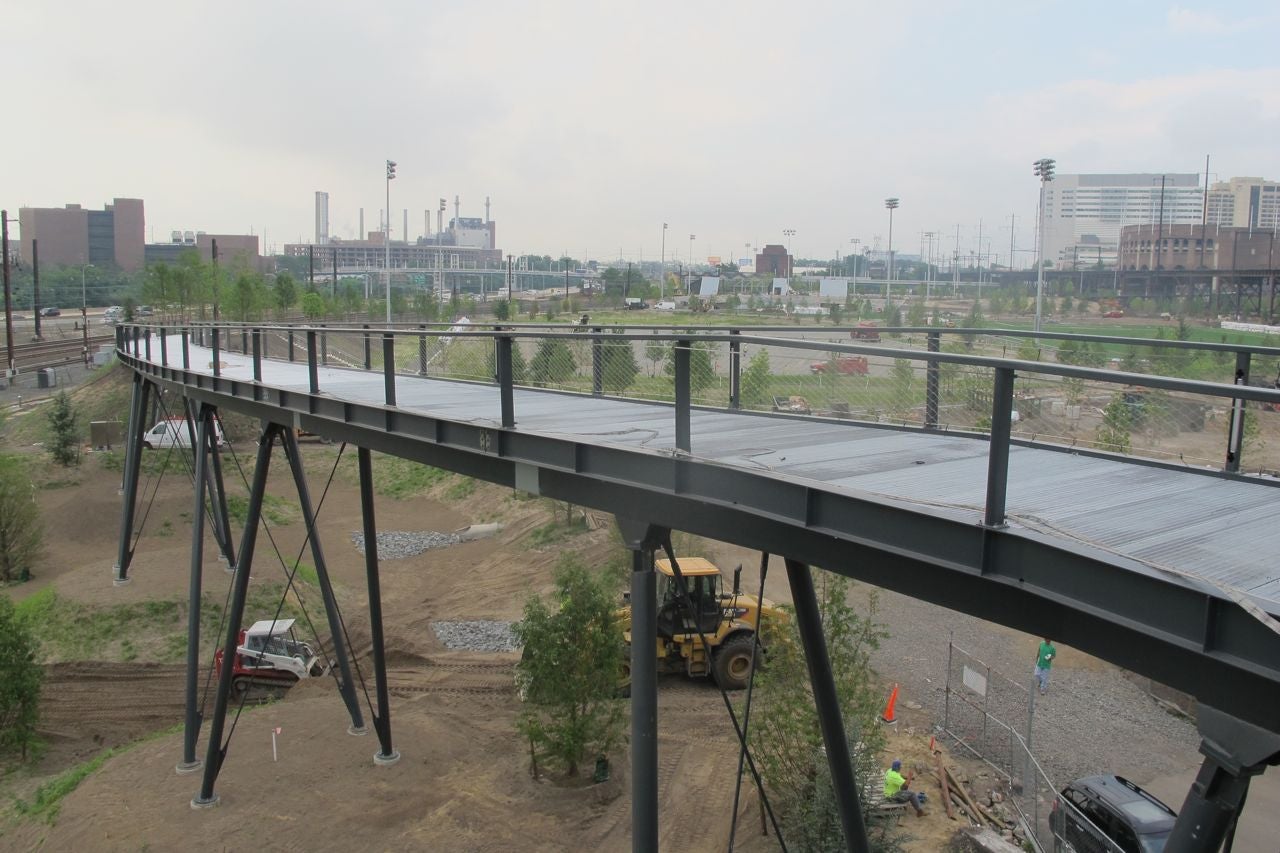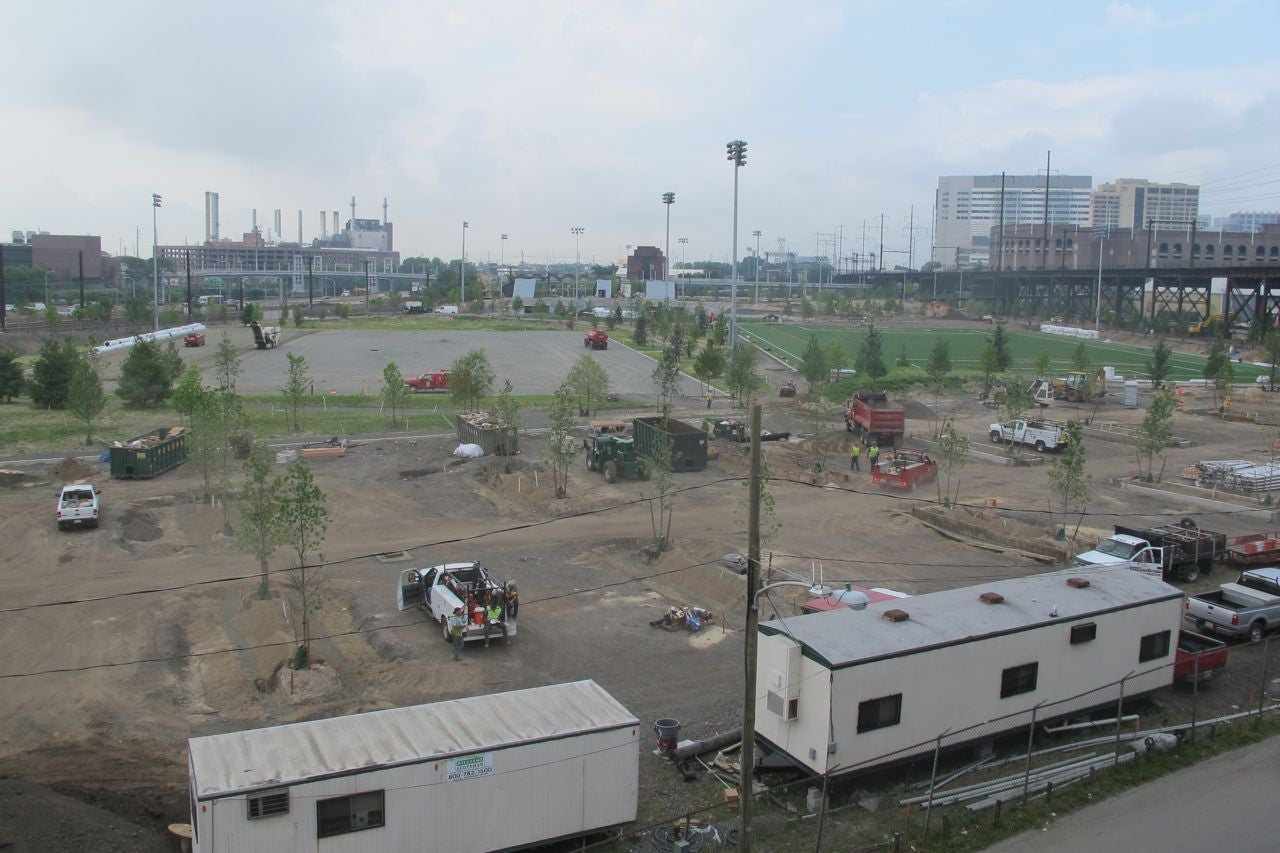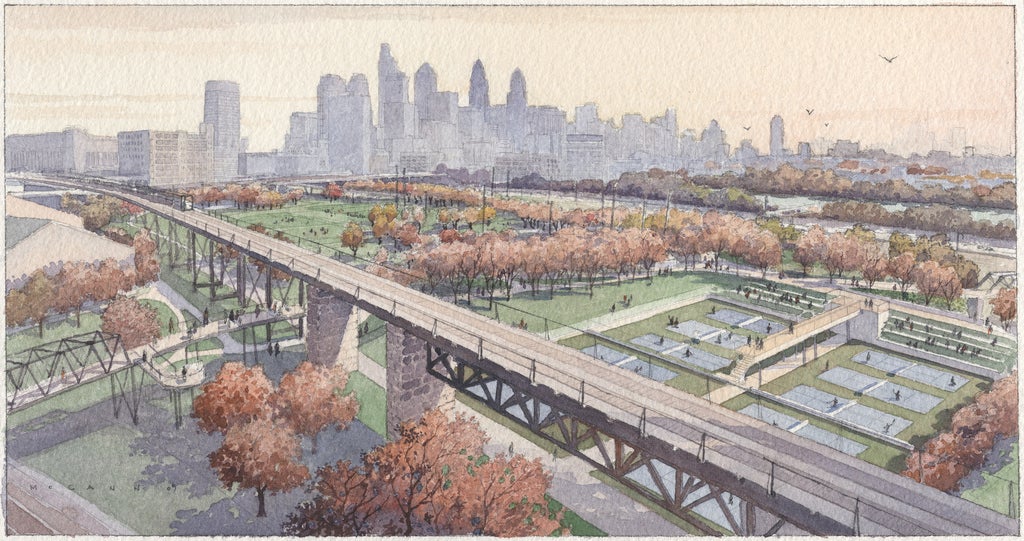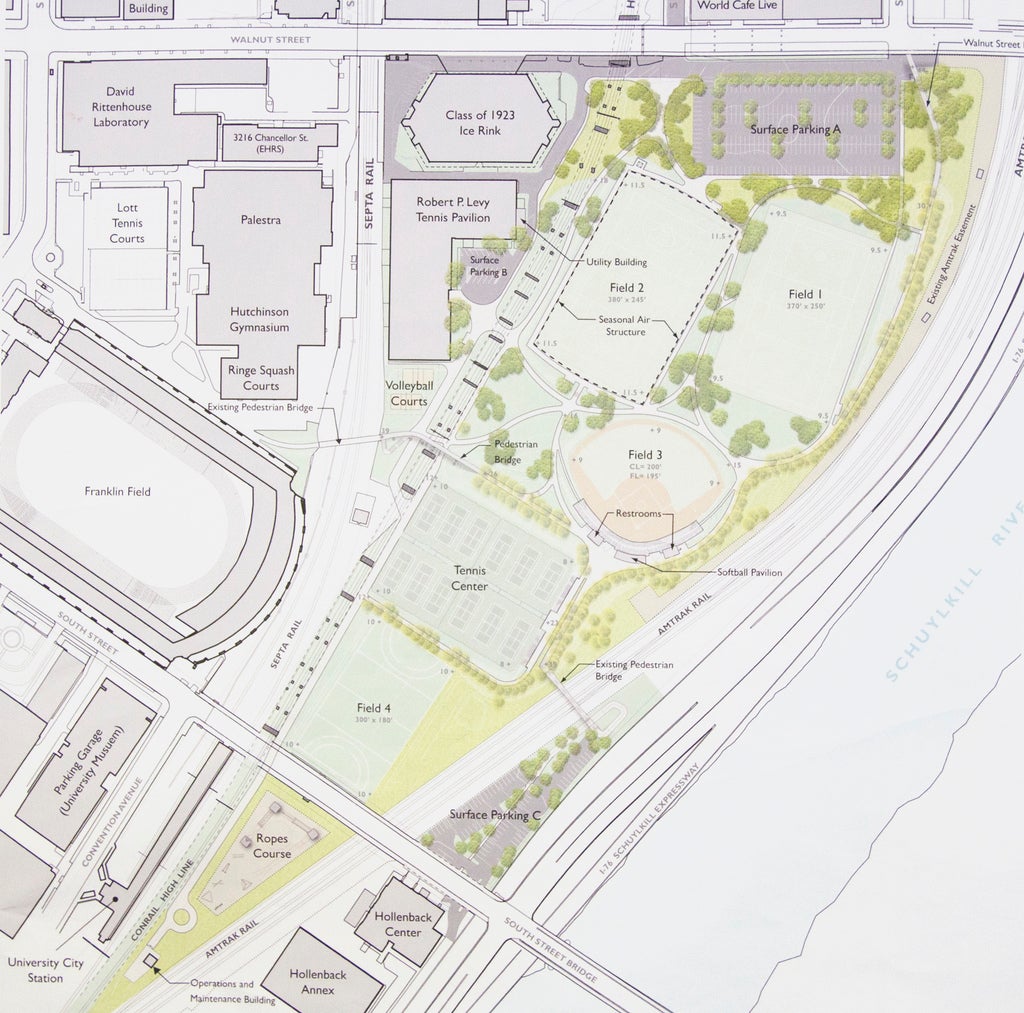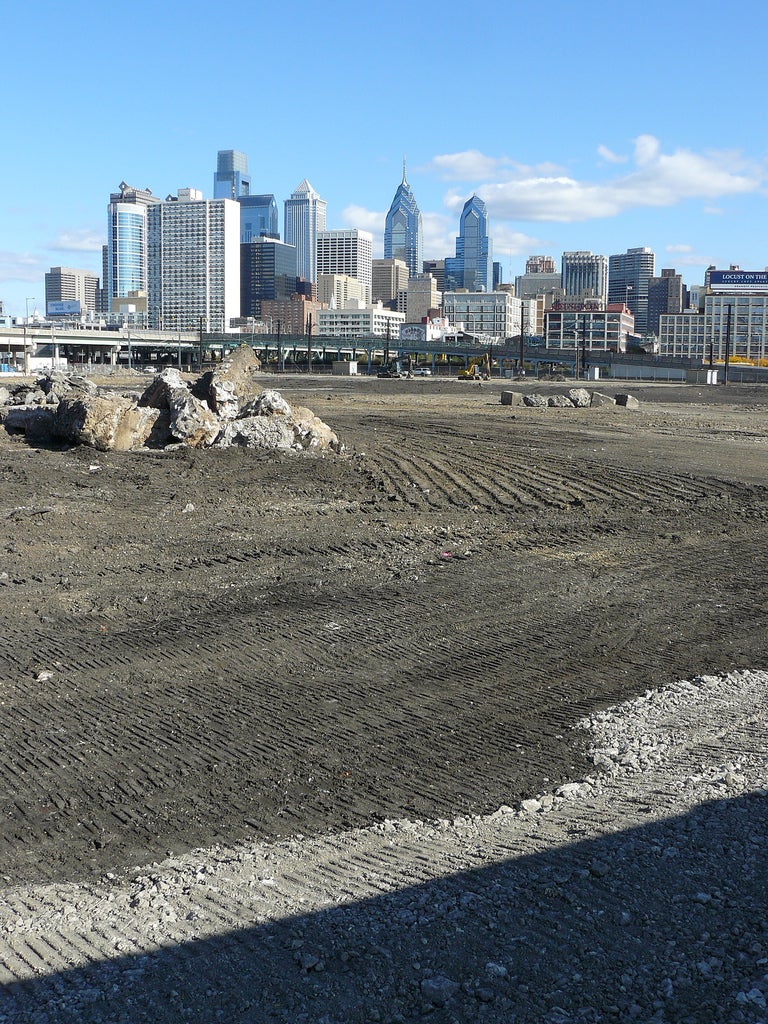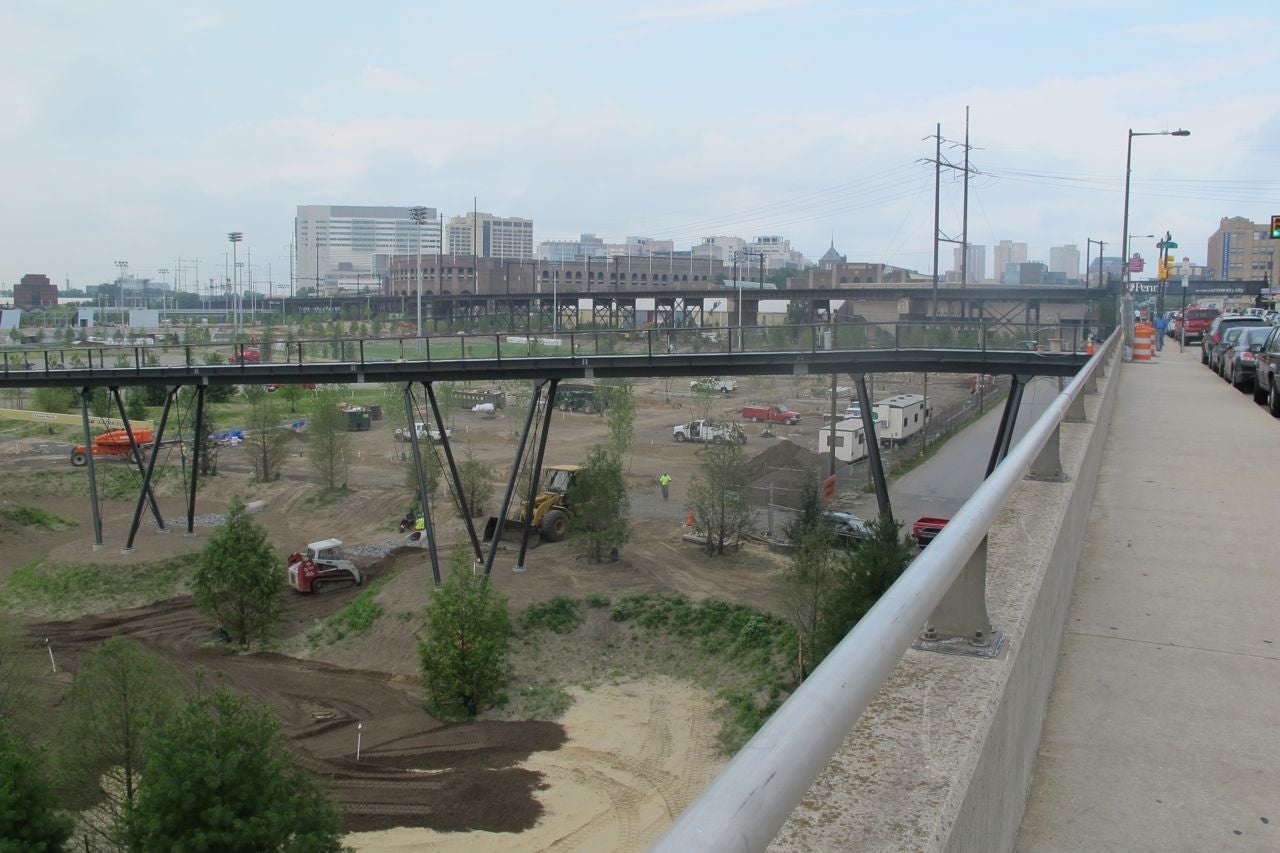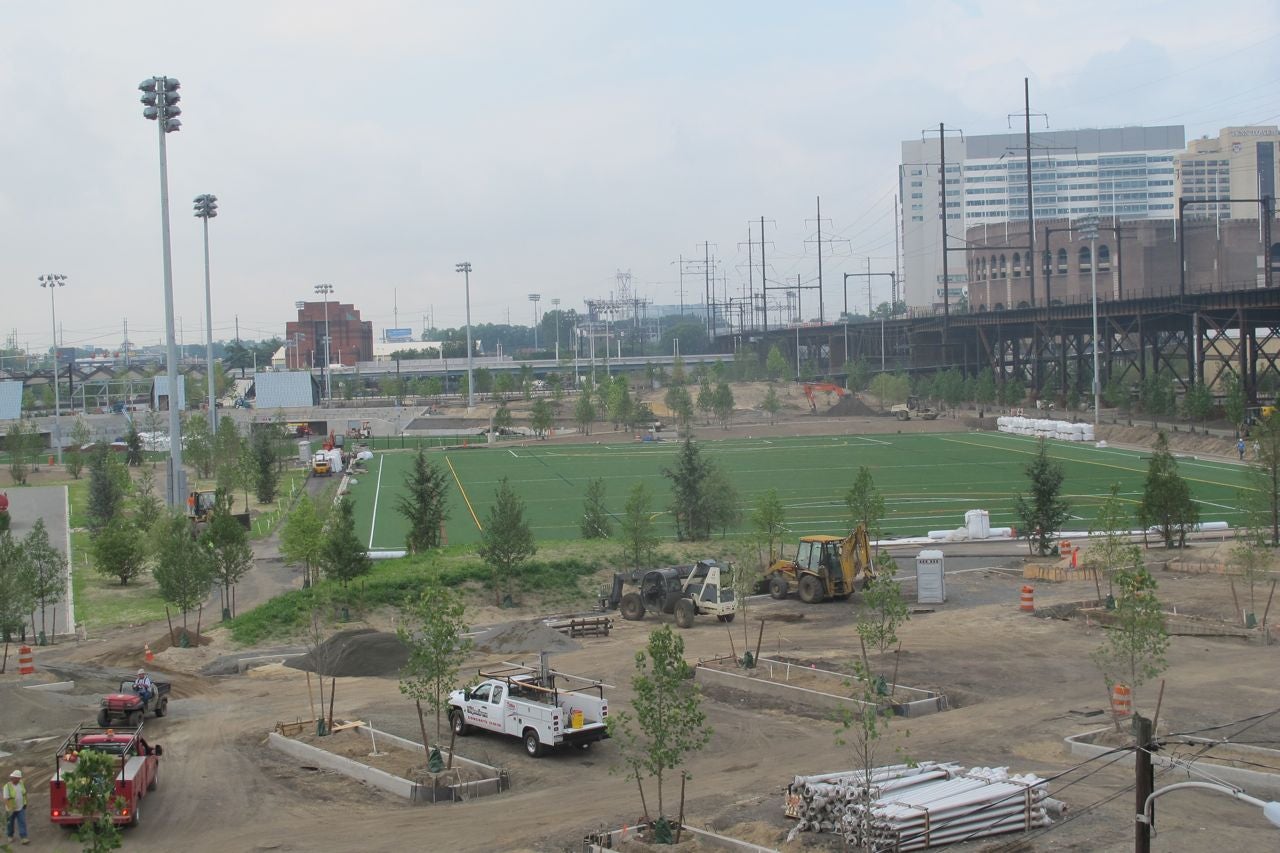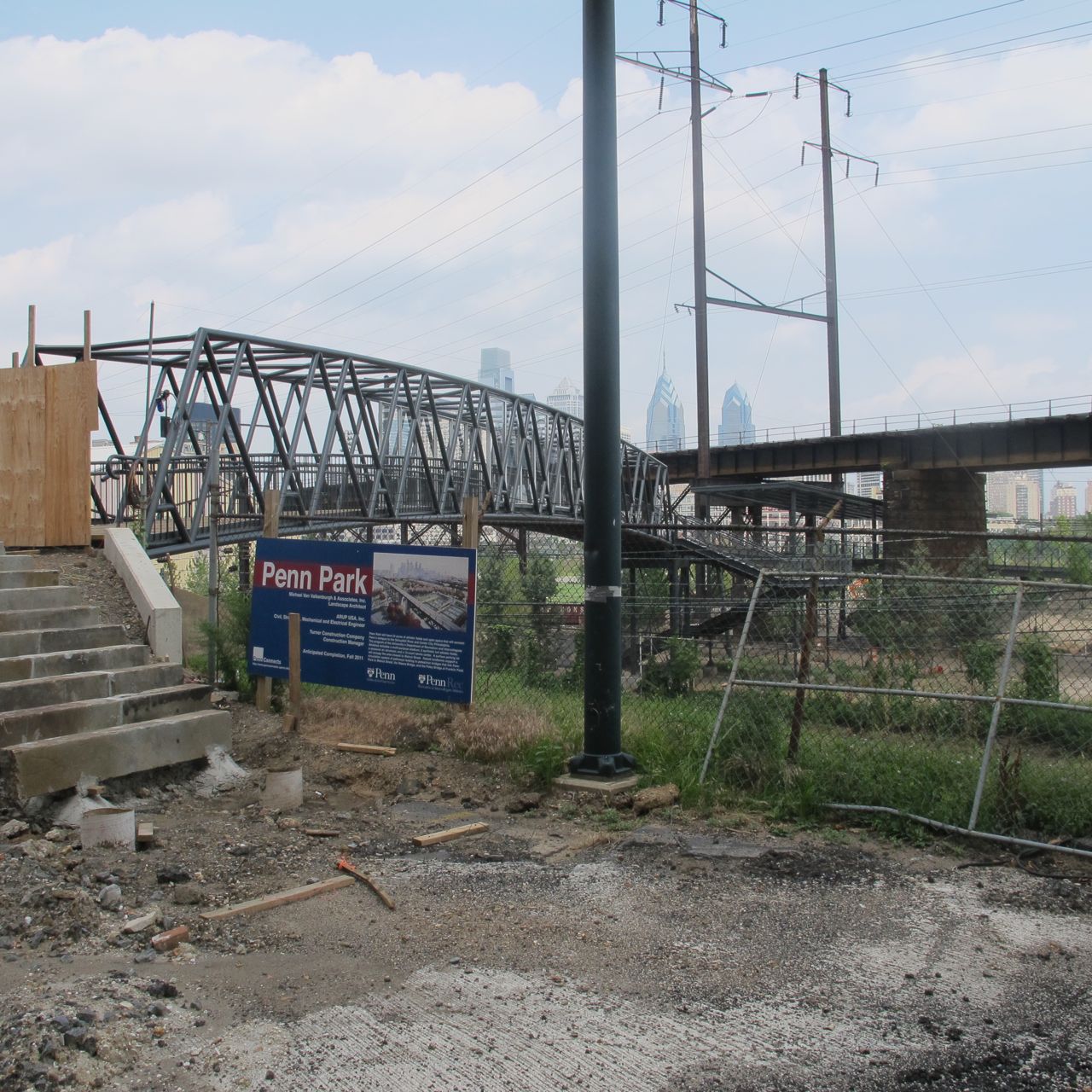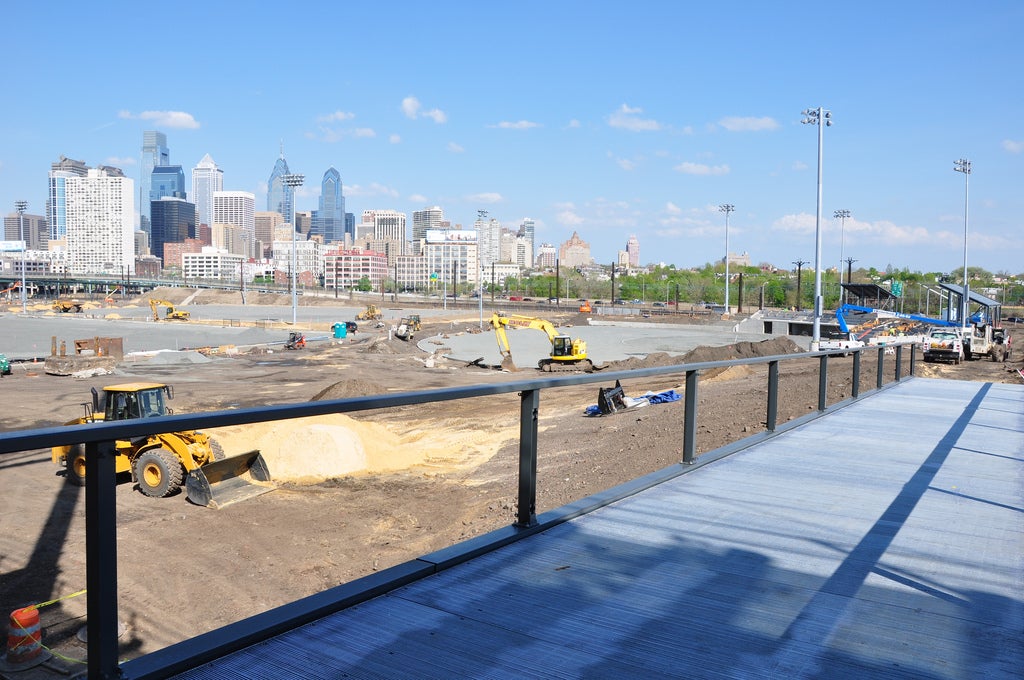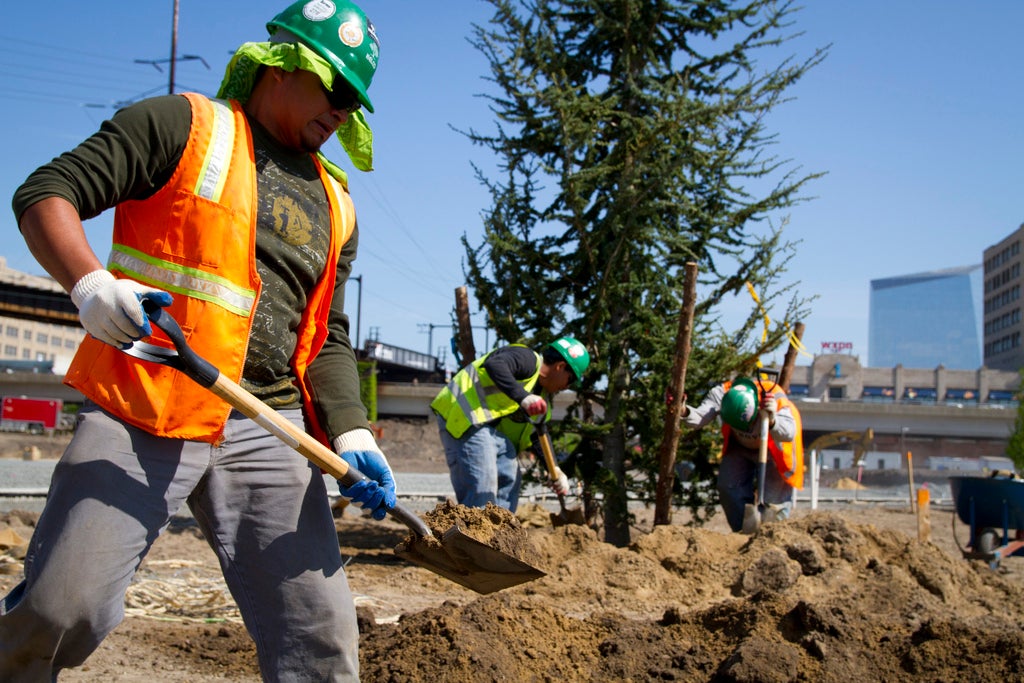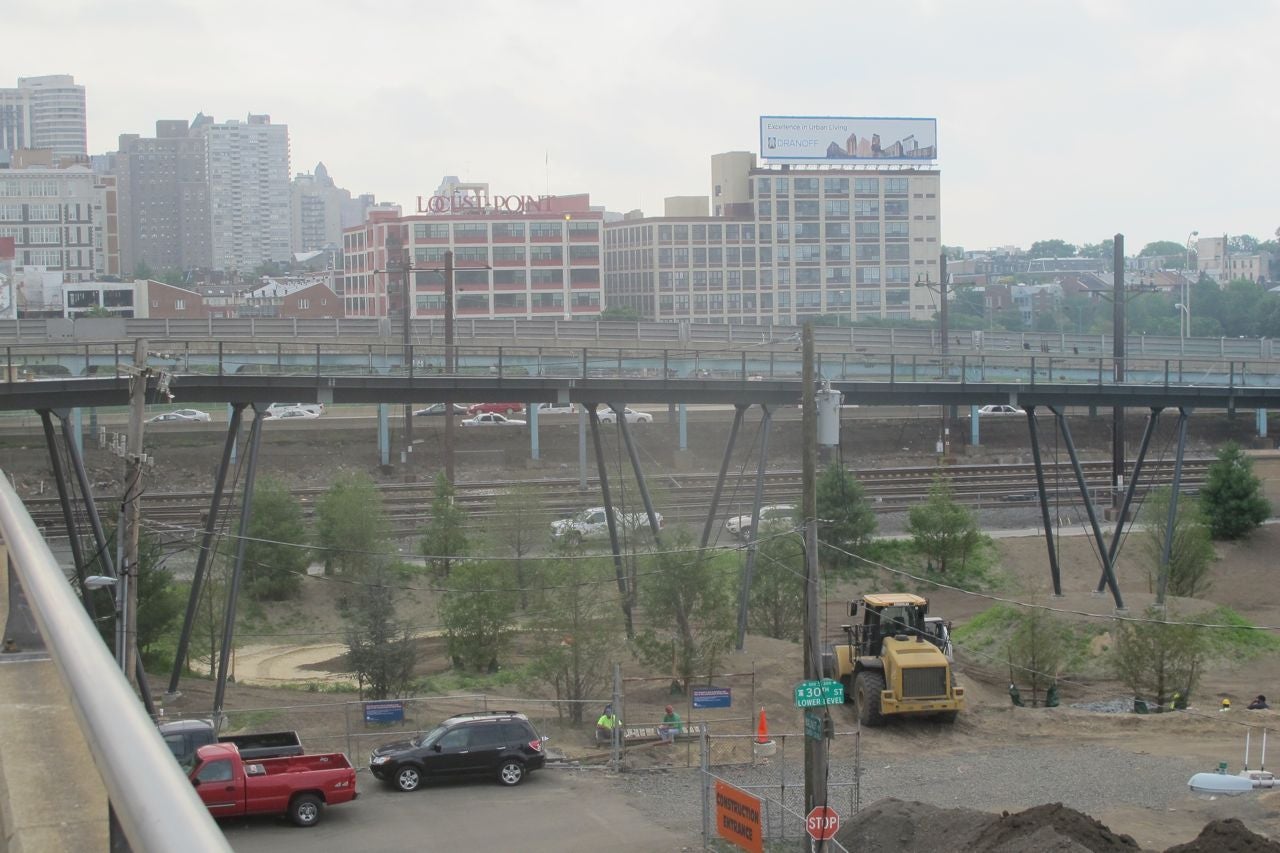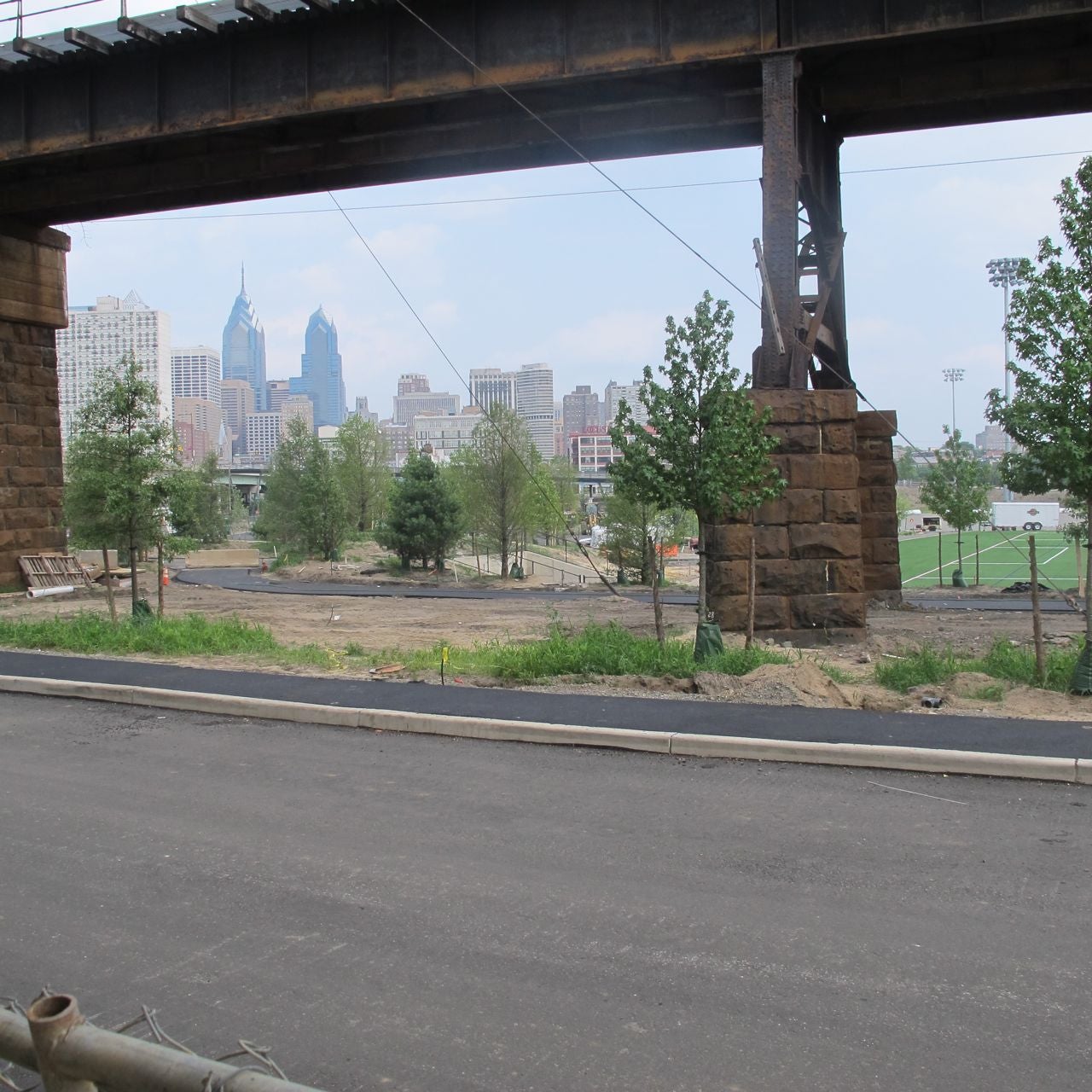Penn Park is an “oasis” in West Philadelphia
Summer is fully upon us, and on its heels is Penn Park.
Penn Connects, a long-range land use and urban design campus plan for the University of Pennsylvania initiated this project in conjunction with the goals behind Penn’s Climate Action Plan, and now the park is “growing greener” by the day.
The site of the park, located roughly at 31st Street, between Walnut Street and South Street, and hemmed in by Amtrak, CSX and SEPTA rail lines, has begun to show rapid development. This project, which was originally proposed in early 2009 and broke ground later that year, had been progressing on schedule, but most of the infrastructure work remained fairly hidden to pedestrians passing by on Walnut Street.
Now one cannot pass the site without noticing the change of color. Penn Park’s architect, Michael Van Valkenburgh, envisioned a traditional, easy to maintain plant system. The park contains 520 trees and a variety of meadow grasses, planted on a gradation of elevation, with some specimens 25 feet above the flood plain and others directly in the flood plain.
While the plantings are certainly the most notable change at Penn Park since our last update in October 2010, the structural aspects of the project have progressed apace. Over the winter, the structures began to take shape. Now visible are the beginnings of the multi-purpose stadium, the dugouts, and the tennis center, which includes 12 courts, all of which are surrounded by landforms made using Mechanically Stabilized Earth (MSE) instead of concrete, saving $1.8 million on the total project budget.
Work on the various entrances to the park is well underway: the Alleé bridge connects the Paley Bridge Extension to the park; the Walnut Street footbridge is a dramatic link to the open space; and two other pedestrian access points connect the park to the rest of the city.
Once spring arrived, trees were planted and the turf playing fields were built and groomed, creating that eye catching green statement. The multi-purpose playing and recreational fields have been laid out and sod will be put down next week. Pathways have been paved, electrical lines run for high performance lighting, and the drainage systems installed.
Recently, PlanPhilly had the opportunity to talk to Anne Papageorge, the Vice President of Facilities and Real Estate Services at Penn, about the key elements of the project. The following is what we learned about security, unanticipated challenges, green infrastructure, project cost and timeline and public amenities.
According to Papageorge, Penn Park is already proving to be a success, exceeding the expectations of university trustees, President Amy Gutmann, Penn’s regulatory colleagues, and additionally organizations such as the city’s water and streets departments. “The trees made it into an oasis,” said Papageorge, in describing the rare 24-acre patch of green in a dense urban area. The space is all the more valuable since most of the city’s open space, nearly 90 percent, is contained in Fairmount Park. Papageorge said the experience of standing in the park gives one the feeling that “the scale is tremendous,” thanks to Van Valkenburgh’s ability to navigate the dimensional challenges and transitions of the space.
Penn worked with the Philadelphia Water Department, the Streets Department, PECO, Amtrak and SEPTA, and the Department of Licenses & Inspections throughout the design, planning and implementation processes to create ongoing improvements and adjustments. Decisions were made cooperatively concerning the approval of the structures to be built, the installation of new lighting, curbs, asphalt surfaces, and street poles on lower Walnut Street, as well as changes to project design in order to create park entrances that could be integrated with various railroad tracks and bridges. A major test of teamwork was the creation of the high-tech, self sustaining stormwater drainage and containment system.
That is a story in itself. Philadelphia has an outdated one-pipe sewer system which – in bad rainstorms – combines human waste and stormwater drainage, overflows the system, and dumps that mix directly into the river. Penn’s approach to stormwater management will not add volume to the city’s present burden. The system in Penn Park will harvest and store water underground, in addition to draining it through trenches between the fields in the park in order to irrigate landscape. A wide array of species of vegetation that work well in this climate were carefully selected. The plants do not require high maintenance care and will rely solely on irrigation and rainwater.
While the project has remained on budget at $46 million and on schedule, not always the case when planning, design, renovations and construction involve so many entities, there was an unexpected and challenging hitch. It is not uncommon for soil in Philadelphia, particularly around the rivers, to be rather insubstantial. That was the case on this property, which borders the Schuylkill River. The lack of capacity in the upper layer of organic soil made it impossible to support the planned structures and vegetation, so 2,200 concrete piles were driven into the ground to buttress the planned buildings and land berms. This expensive solution was identified early enough in the process to avoid detrimental cost overruns and project timeline complications.
The park will be completed in mid-August and the fields will be open for use, with the addition of a seasonal air structure being installed in November to allow for indoor athletics on one field during the winter months. The park will be managed by Penn but will function as a public space. The multi-purpose stadium will hold over 400 spectators and the park will have approximately 200 parking spots. Use of the fields will be scheduled through Penn Athletics or Penn Facilities and Real Estate Services for both formal and informal events. The size of the two synthetic turf fields can accommodate three games simultaneously. The open space that makes up roughly half of the park space will be open to the public.
As of now, the park will not be gated at any time, although it will be officially closed in the evenings with no scheduled activities in the fields. There will be a security building in the park, full security camera coverage, and public safety patrols monitoring the grounds. Other possible uses can only be projections at this point, but the project team anticipates a range of potential recreational uses as long as such uses comply with city-wide park rules and regulations.
Papageorge believes Penn Park heralds a commitment by the university to play a role in creating a more connected city with high performance buildings and open spaces: “Once you fix up one room in your house, then you need to fix up the others to match,” she said, referring to other planned projects that would link University City with Center City.
Since enacting the Climate Action Plan in 2009, Penn has created four LEED (Leadership in Energy and Environmental Design) sites. During this project, Penn has had discussions with a wide array of stakeholders, including the Schuylkill River Development Corporation, Brandywine Realty Trust, and PennDOT, in order to coordinate efforts on projects such as the Walnut Street Gateway and a Market Street Square in front of 30th Street Station. For Papageorge, the Penn Park project and others that will follow, constitute a rare chance for improvement. “It’s not every day you have an opportunity to do something like this,” she said.
For ongoing Penn Facilities coverage of Penn Park and more photos, click here.
Contact the reporter at helen.kunda@gmail.com
WHYY is your source for fact-based, in-depth journalism and information. As a nonprofit organization, we rely on financial support from readers like you. Please give today.



